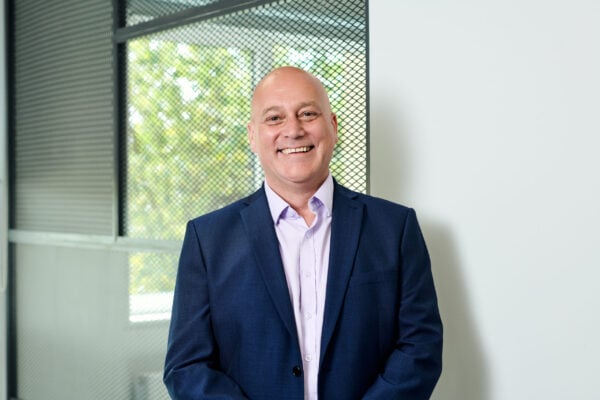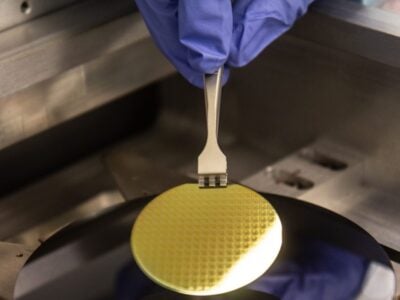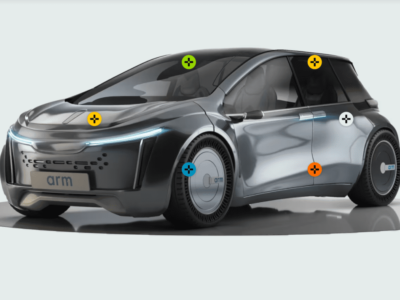
CEO interview: Dukosi, building a fabless semiconductor firm in Scotland
“Dukosi as a business has been around since 2003 but the Dukosi of today was established in 2014,” said Edington. “Before 2014 we were ASIC design business working on IP blocks for a wide range of different customers, but in 2014 the CEO was tragically killed on a bike when leaving work and the IP Group were looking to invest in the company.”
That CEO and founder, Dr Stephen Churcher, had previously worked with Xilinx and in 1999 co-founded Elektrobit (UK) which worked on Bluetooth and WiFi. In 2003, co-founded Dukosi with Joel Sylvester.
“Dukosi had done a chip design for General Motors for battery management and we were looking at converting to a product business,” said Edington. “Then investment came in from IP Group and we went on a different path to focus on battery management and develop a technology that would disrupt the battery management that was an obvious direction.”
“Clearly the whole EV market was going to grow quite nicely but the way the EV market has taken off I don’t think anyone expected the rapid expansion. It has worked out quite well,” he said.
“The technology was developed and we looked at various options on improving battery monitoring and looking at various technologies, wireless, powerline which proved way too noisy and the technology we have today has been honed as an ASIC in the last four years.
Edington has tapped the local semiconductor cluster around Edinburgh for skills.
“I spent eight years at [Scottish chip designer] Wolfson from 2004 to 2012, and ran the portable business there, and there’s lots of ex-Wolfson people here,” he said. Wolfson Microelectronics supplied audio and portable power chips to Apple for its iPods and iPhones and was acquired by US fabless semiconductor firm Cirrus Logic in 2014 for £291m.
“I came back up to Edinburgh three years ago and assembled the old team from Wolfson. A lot were still at Cirrus, Maxim, ADI, Dialog, and the nice thing is that they are very experienced top class analogue designers that have done the production version of the chip. Getting that level of experience onboard is vital,” he said.
“When I started there was 10 people and we are up to 50 now and by the end of the year we will be 75 – one of our biggest challenge is recruiting people and we are having to compete with large companies on packages. Another key milestone was two years ago looking for investment and talking to our current owners, and rather than invest in the business they bought us,” he said.
- Wolfson to become primary Samsung audio partner
- Cirrus to take half the audio IC market, says report
Dukosi had raised £6.7m according to Crunchbase before the acquisition in October 2019 by KCK, the private equity arm of a US family office with a focus on tech startups.
“KCK operates mainly out of the US and has committed significant funds to really focus on the development. Rather than having to raise money it’s about moving as fast as we can,” said Edington. “So we are going into production next year and we have Dukosi Inc in the US, sales in Europe, Taiwan, China and customer engagements in all of those regions, waiting on the final silicon later this year
“Now the recruitment is about operations, qualification and in particular the customer support,” he said. “The software team will double, its 8 at the moment and we have a test team of 5 people and are recruiting for that. We have the ATE equipment, Teradyne J750s, here, and the supply chain is GlobalFoundries in Singapore and Amcore in the Philippines. The plan is to develop the production test programmes and do all the yield improvement and throughput improvements from here.”
The location is also important.
“We are moving from Heriot Watt to the city centre with double the space and that’s better for attracting people.”
Next: Wireless BMS chip technology
The wireless battery management chip uses the GF 55nm extended flash process. The chip sits on a prismatic or pouch battery cell to monitor the current, voltage and temperature. All the data is stored on the chip, providing a full history of the activity of the cell and calculating the state of health and state of charge.
“We have an embedded ARM Cortex-M3 core and the specification of the flash was important,” he said. “We’ve developed our own DSP and we offload a lot from the ARM core and that makes it more efficient.”
The data is also transmitted back to the battery management system via a near field communications (NFC) wireless link on the chip to an antenna that runs the entire length of the battery pack. This eliminates the wiring harness for the BMS and reduces the number of components and the weight and boost the reliability.
“We have done a lot of analysis and benchmarking and looked at wireless and wireless systems and compared them to ours against the EV systems, eliminating wires, connectors, HV components,” said Edington. “With the most competitive we are on a par with most of the benchmarks. Everything is measured directly on the cell and processed and communicated wirelessly and you don’t have variable lengths of wiring.”
This also allows more flexibility in the system design.
“What we do is flatten the cell to pack hierarchy and every cell hangs off one antenna so we can have over 300 cells on one antenna and all can report in sequence very quickly. What is means is you can add one cell at a time.“
Even though the chip is designed to the ASIL-C safety level for an AS-D system design, the initial market for the chip though isn’t electric vehicles but energy storage systems (ESS).
“Half our market opportunities are EV and that’s a big focus but the other 50 percent is energy storage and industrial applications, and that’s where we will be shipping our first products to ‘pipe clean’ the supply chain,” said Edington. “In the ESS market if you want to use the other wireless technologies they have to have line of sight for strong signals and with our technology you can bend around corners with a robust communication network and it allows you to reduce the volume of the batteries and increase the energy density.”
However the chip is designed with the automotive market in mind from the start. “The chip is ASIL-C to allow a ASIL-D system in particular with the production version and we have built in some stuff in the chip that we feel we can patent.” This allows the chips and battery cells to be used first in electric vehicles and then re-used in ESS systems, so the chips are designed for a 20 year life.
“One of the big barriers in moving to a second life application such as ESS is the testing and history of the cells and at the moment that’s being done by testing those cells one at the time. With our system you can interrogate the chip and you have the whole history.”
With the first sample of silicon set to ship back to Edinburgh in the next few weeks for characterisation and testing, Dukosi is just at the start of its growth across a number of different areas.
Related articles
- TI takes on ADI, Infineon with wireless BMS
- Infineon looks to wireless BMS technology
- Wireless BMS gives supercar batteries a second life
- Fabless firms are winners in 2021 boom time
- Energy storage market to top $546bn by 2035 says report
Other CEO interviews
- The CEO interviews of 2021
- Building a quantum computing leader in Europe
- Building a European sensor unicorn
- Nick Russel, Russel Industries
 If you enjoyed this article, you will like the following ones: don't miss them by subscribing to :
eeNews on Google News
If you enjoyed this article, you will like the following ones: don't miss them by subscribing to :
eeNews on Google News



